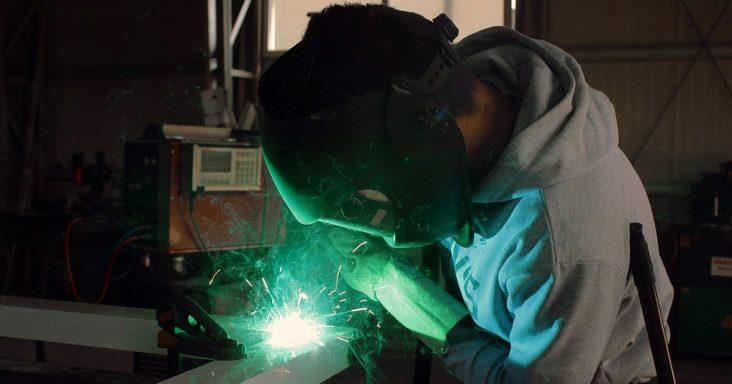Manufacturing sector expanded at faster rate in August
by September 1, 2021 10:18 am 415 views

According to the Institute for Supply Management (ISM), economic activity in the manufacturing sector increased at a faster rate in August as manufacturers struggle to meet rising demand. Meanwhile, the overall economy grew for the 15th consecutive month.
Timothy Fiore, chair of the ISM Manufacturing Business Survey Committee, released Wednesday (Sept. 1) the Manufacturing ISM Report on Business that shows the Purchasing Managers’ Index (PMI) rose by 0.4 percentage points to 59.9% in August, from 59.5% in July. A reading above 50% indicates the manufacturing sector is expanding.
The new orders index increased by 1.8 percentage points to 66.7% in August, from July. The production index rose by 1.6 percentage points to 60%. The prices index fell by 6.3 percentage points to 79.4% and was the first reading below 80% since December. The backlog of orders index increased by 3.2 percentage points to 68.2%. The employment index fell by 3.9 percentage points to 49%. The supplier deliveries index declined by three percentage points to 69.5%. The inventories index increased by 5.3 percentage points to 54.2%. The new export orders index rose by 0.9 percentage points to 56.6%. The imports index increased by 0.6 percentage points to 54.3%.
“Business Survey Committee panelists reported that their companies and suppliers continue to struggle at unprecedented levels to meet increasing demand,” Fiore said. “All segments of the manufacturing economy are impacted by record-long raw-materials lead times, continued shortages of critical basic materials, rising commodities prices and difficulties in transporting products. The new surges of COVID-19 are adding to pandemic-related issues — worker absenteeism, short-term shutdowns due to parts shortages, difficulties in filling open positions and overseas supply chain problems — that continue to limit manufacturing growth potential. However, optimistic panel sentiment remained strong, with eight positive comments for every cautious comment.
“Demand expanded, with the new orders index growing, supported by continued expansion of the new export orders index, customers’ inventories index remaining at very low levels and backlog of orders index staying at a very high level,” he added. “Consumption, measured by the production and employment indexes, declined in the period, with a combined 2.3-percentage point decrease to the manufacturing PMI calculation. The employment index returned to contraction after one month of expansion; hiring difficulties at panelists’ companies were the most significant hurdle to further output in August, as validated by the growth in inventory accounts.”
Inputs, expressed as supplier deliveries, inventories and imports, continued to support input-driven constraints to production growth at slower rates than July, Fiore said. The supplier deliveries index moderated, while the inventories index expanded due to improvements in raw materials deliveries and work-in-progress inventory being held longer because of part shortages. He said that the prices index indicated growth for the 15th consecutive month amid continued supplier pricing power and scarcity of supply chain goods.
The six biggest manufacturing industries had moderate to strong growth in August, including computer and electronic products; fabricated metal products; chemical products; food, beverage and tobacco products; transportation equipment; and petroleum and coal products.
“Manufacturing performed well for the 15th straight month, with demand, consumption and inputs registering month-over-month growth, despite unprecedented obstacles,” Fiore said. “Panelists’ companies and their supply chains continue to struggle to respond to strong demand due to difficulties in hiring and a clear cycle of labor turnover as workers opt for more attractive job conditions. Disruptions from COVID-19, primarily in Southeast Asia, are having dramatic impacts on many industry sectors. Ports congestion in China continues to be a headwind as transportation networks remain stressed. Demand remains at strong levels, despite increased prices for nearly everything.”
A respondent in the computer and electronic products industry said the chip shortage has impacted supply lines but so far has managed it without affecting clients. Another industry respondent said COVID had impacted some factories, and the Malaysian government said factories could operate at only 60% of capacity.
A respondent said production is limited in the transportation equipment industry because of chip supply issues, but sales remain strong.
A respondent in the electrical equipment, appliances and components industry said part shortages are its most significant business constraint, but business is strong. The respondent also said it cannot fulfill orders to customers in reasonable lead times and is booking into 2022. Conditions are expected to worsen in the fourth quarter amid high demand.
Other industry respondents also noted that business is strong but are struggling with labor, parts and shipping issues. Another challenge for multiple respondents has been rising raw material prices.
